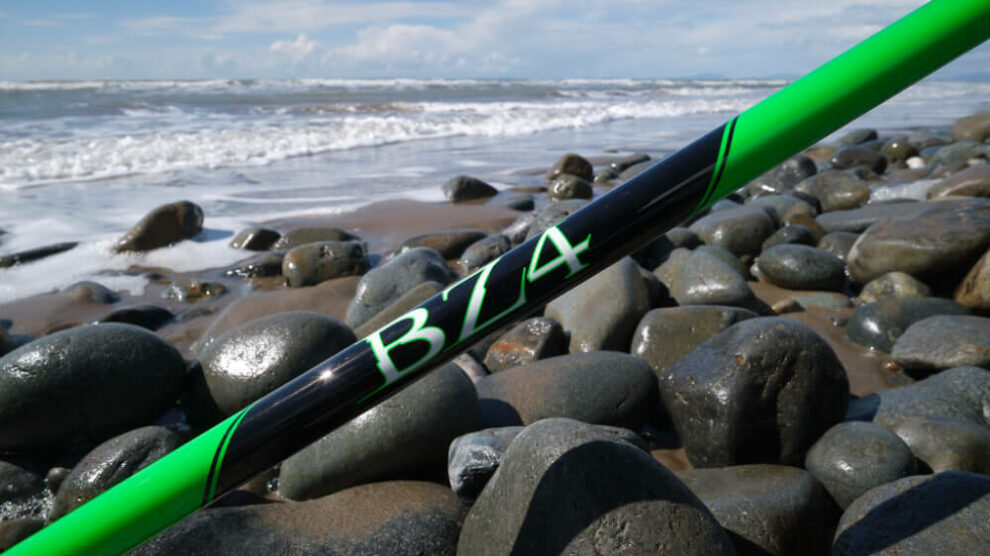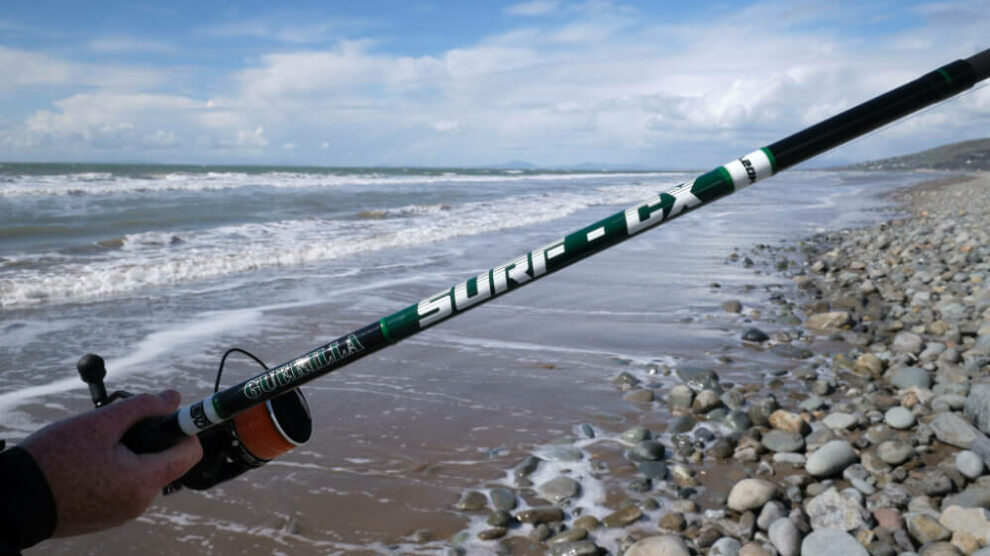Most shore whiting weigh no more than a pound, but there are always bigger fish among them, with a 2lb fish being classed nowadays as a shore specimen. The exception to this would be parts of the English Channel coast where 2lb fish are much more common, also the west of Scotland with bigger fish more likely here.
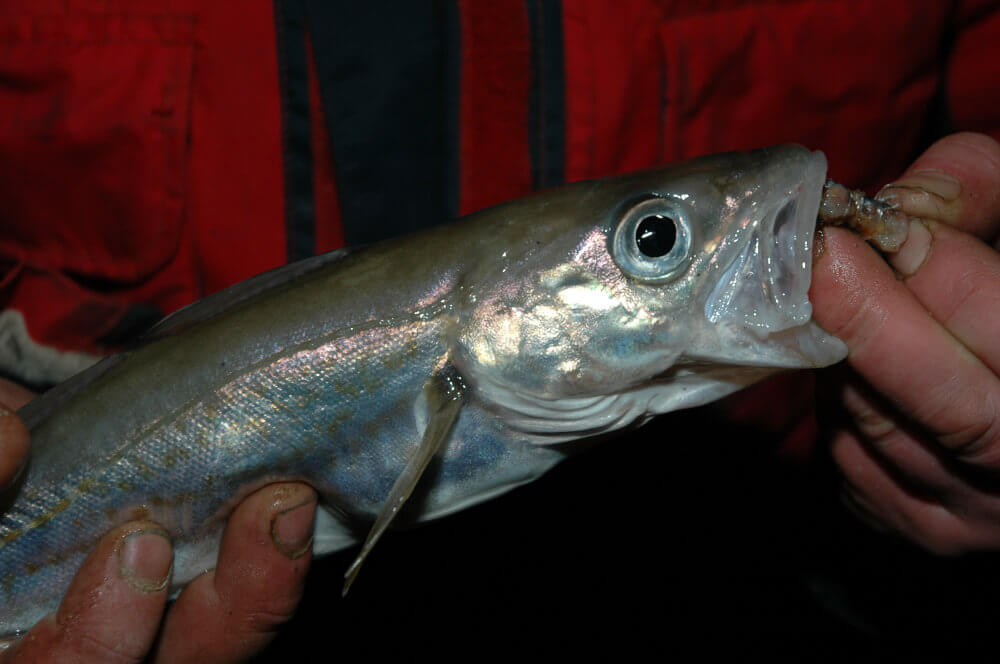
Season
Although small pin whiting can be caught inshore throughout the year in many areas, the traditional start to the main autumn and winter whiting season falls with the second set of spring tides in September. This sees a vanguard of bigger whiting slowly appearing, with their numbers escalating quickly through October, peaking in November and then slowly starting to thin out towards Christmas and the New Year.
Along the west coast, you often find the odd big whiting between 1lb and 2lbs plus in the surf, imitating bass in the late January to late February period when the bulk of the shoals have thinned out.
Habitat
They are lovers of clean sandy beaches or deeper steep-to beaches where the seabed is clean or a light mix of rougher ground with mainly sand scattered through it. They can also be taken from man-made structures such as piers, breakwaters, stone jetties and even off the open sea rock ledges if they provide access to clean ground. Furthermore, they also frequent harbours where the bottom consists of muddy sand.
On the beaches, they will cover most of the ground but will concentrate in the gutters, gullies, and areas with small sandbanks or depressions in the general seabed.
One thing to remember is that they like some tide run, but not the main force. So, look for areas that sit just on the edge of the tide when fishing man-made structures or rocky headlands.
Weather and Tides
Being a relatively small shoal fish, they prefer calm, frosty weather with settled seas and high pressure. Nights when you can almost touch the stars and the moon is full are perfect. Light onshore winds are ok, but light winds off the land can be even better. Once the seas roughen up in bad weather, on the shallower venues, the whiting will move out into deeper water where the sea swells have less effect at seabed level.
Whiting dislike heavily coloured water after storms carrying a lot of suspended sediment. They like clear water with some clarity.
The best tides are the bigger spring tides, especially those climbing towards the highest tides, but try to time your fishing to tides that start to flood in darkness. Tides that flood in daylight and peak in the dark are less good for bringing the numbers of whiting in. Neap tides can produce, but overall numbers of fish are generally less. The middle hours of the flooding tide will produce the most fish, but expect the whiting to drop out deeper once the ebb tide gets underway. Keeping contact with them on the ebb can require longer casting.
Whiting Tackle
In the calmer weather and on venues where the whiting are within 100-yards, a lighter rod of around 13’9” casting 3-5ozs, such as the Tronixpro Banzai BZ4, offers plenty of power matched to a Tronixpro Banzai Surf LC loaded with either 20 to 30lb Tronixpro X8 Power Braid plus mono backing. Fishing 4oz weights with this rod is ideal, so use a 40lb shock leader to take the casting pressure.
If you need longer range, are fishing to specific features such as gullies and sandbanks further out, or fishing from piers and breakwaters, then a longer 13’9” to 14’9” continental-style rod will give that extra distance. Put an 8000-sized fixed spool on this loaded with 30lb braid and a 60lb braid shock leader, and you have an outfit capable of fishing baits at 150-yards in the right hands. The Tronixpro Guerilla Surf CX, coupled with the Banzai FS8000 reel, is ideal for this work.
If you prefer to fish multiplier reels, then a rod around 13’6” and rated to cast up to 6 or 7ozs like the Tronixpro Guerilla MX will cover all options. A Guerilla Mono Mag, 6000-sized multiplier holding around 270-yards of 15lb Blaze Mono line with a 60lb Xenon Tapered Shockleader makes a balanced outfit that can be used off both beaches and off man-made structure, though off the latter using 18lb mono mainline gives just that bit more strength when lifting fish up any distance.
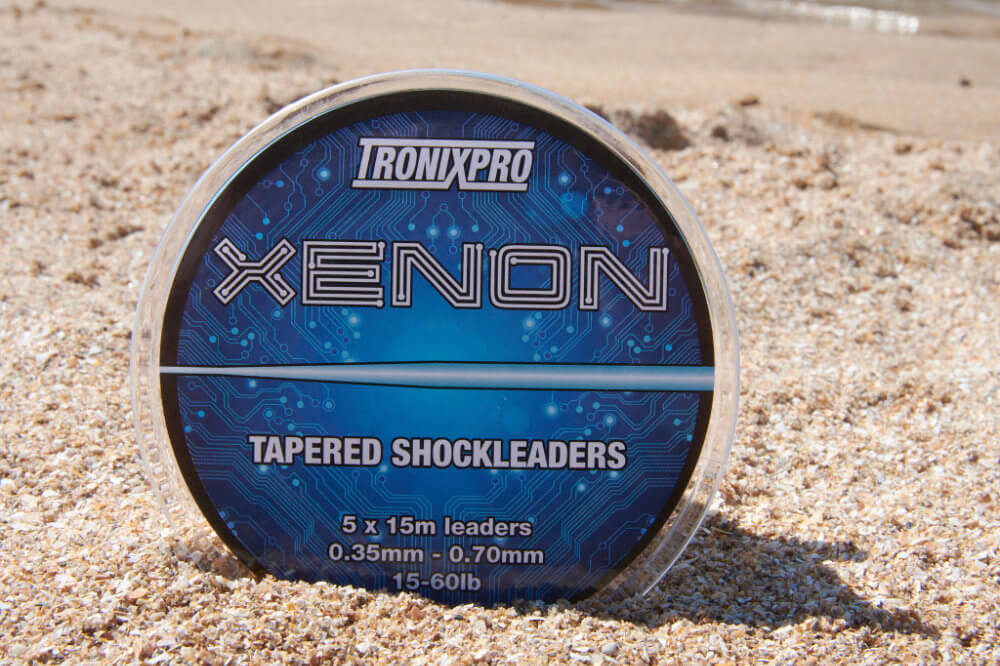
Rigs are not critical, but a simple 40-inch long 3-hook flapper rig with the first hook length positioned just above the lead clip, the middle hook length literally in the middle of the rig, and the top hook near the top connector swivel will catch you a lot of whiting. Keep the hook lengths short, no more than 14-inches in length and from 20lb AXIA Fluorocarbon. The Fluorocarbon is tough and less easy for the sharp pin like teeth of the whiting to chew through it. It’s also slightly stiff in nature and presents the bait and hook better than softer mono in surf conditions.
An all-round hook size for whiting is a size 2 Aberdeen pattern, such as the Tronixpro T31 Fine Surf Hook. This will catch all sizes of fish and has the strength to land bigger fish if they happen along. If you’re consistently catching fish well over the pound, then change to a size 1 or 1/0 Tronixpro Aberdeen when using bigger baits.
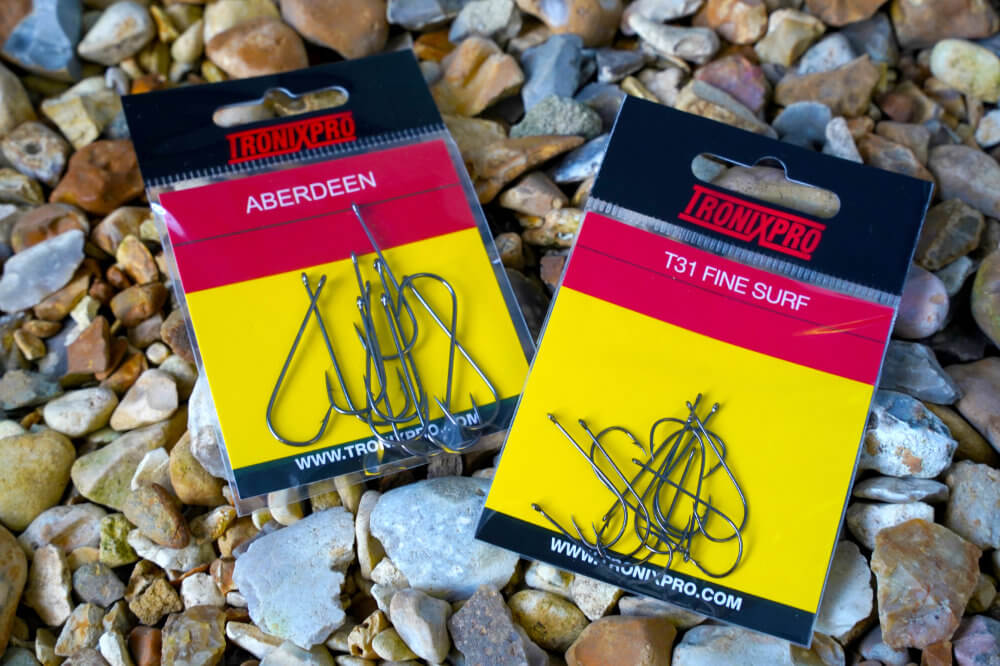
Grip leads that anchor the bait to the seabed will catch you more fish than baits that are allowed to wander. The fish also self-hook themselves against the weight of the grip lead.
Baits
Smaller whiting generally take worm baits, but adding a sliver of mackerel or squid to the worm will increase the number of bites you get. It also encourages the whiting to attack the bait from the hook end, resulting in more fish.
The teeth on the whiting give the game away. They are fish eaters and predators. You’ll find that fish baits will pick out the bigger fish in the shoal. Mackerel strips are excellent baits, herring too, in all circumstances and this is the reliable bait for the bigger fish. They also take body sections of sandeel cut about 2-inches long, and on the surf beaches this can rival mackerel strip.
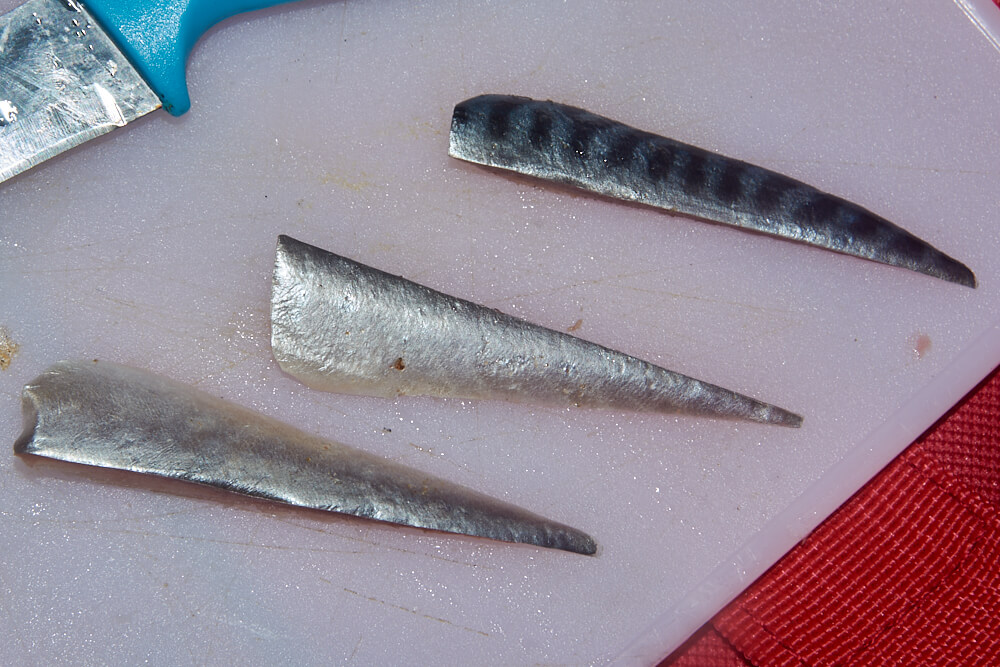
Tactics
On the new flood tide, cast to range at first to find the fish, then slowly reduce your distance as the fish move closer to shore. Fishing two rods can shorten the process of finding the range the fish are feeding at by putting one rod close and the other further out, then bringing them gradually towards each other until you find the feeding band.
If you want to maximise your catch, don’t strike at the first bite. Let the first fish hook itself, then as it kicks in the tide it will draw other fish to it. By waiting a minute or two, you will get two or three fish on the same cast.
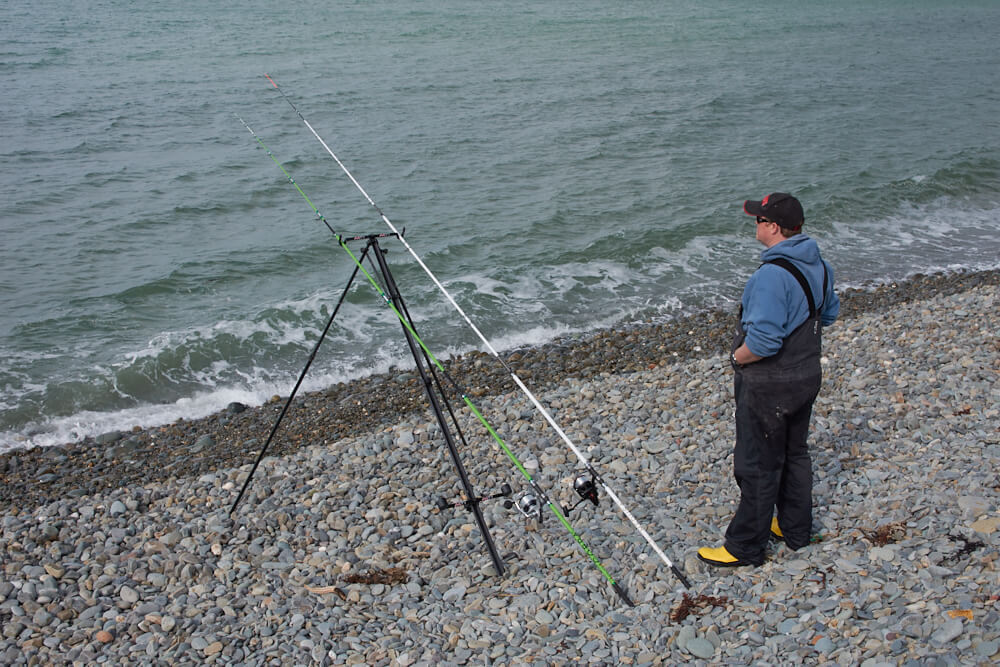
As the tide run slows towards slack water, the number of bites can slow and though you get rattles, you don’t always hook the fish. The trick is to lengthen your hook length a little, say to 15 or 16-inches. This extra movement in the hook length as the tide flow slows allows the fish a little more slack as it takes the bait, then as it swims forward or turns away with the tide it builds up a little swimming speed and comes up tight against the lead, promoting self-hooking.
During neap tides, the ends of beaches where cliffs or rocks begin are always good places to try. It’s often these areas away from the mass shoals of whiting that run the main beach that can produce the bigger fish.
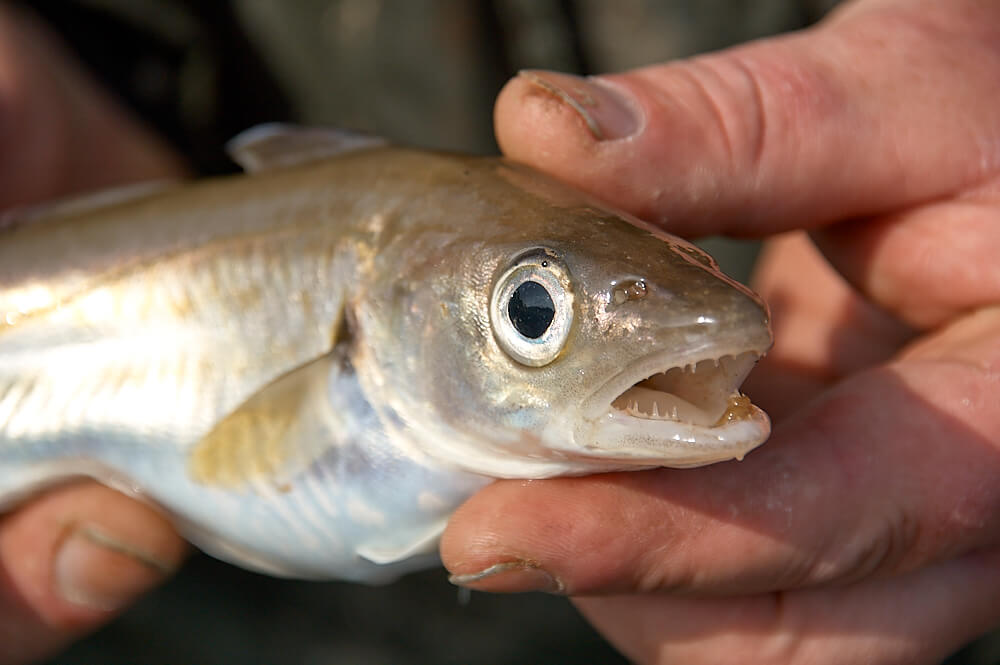
It pays when fishing from man-made structure well above the surface of the water to deliberately fish a slightly slack line from the rod tip to the rig. This slack in the line helps to keep all three hook baits tight to the seabed where the whiting are feeding. You’ll still see the bites on the rod tips, as they are aggressive feeders.
In deeper water at night, try adding a small lumo green bead directly above the hook on the hook length. This bit of coloured advertising can make a real difference to your catch rate.
The Kit List
Rods
Tronixpro Banzai BZ4 13’9”
Tronixpro Guerilla Surf-CX 14’9”
Tronixpro Guerilla Surf-MX 13’6”
Reels
Tronixpro Banzai FS8000
Tronixpro Banzai Surf LC
Lines and Terminal Tackle
Tronixpro X8 Power Braid
Tronixpro Blaze Mono
Tronixpro Xenon Tapered Leader
Tronixpro Blackout Memory Free Hook Length
AXIA 100% Fluorocarbon
Tronixpro T31 Fine Surf
Tronixpro Aberdeen Hooks
Tronixpro Oval Luminous Beads


